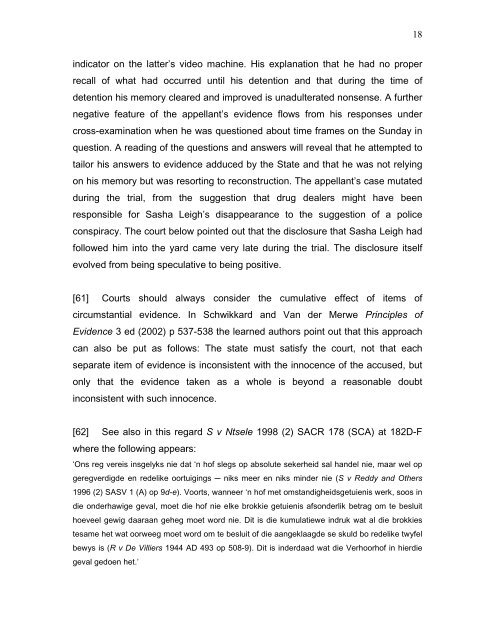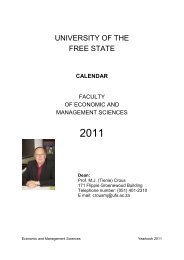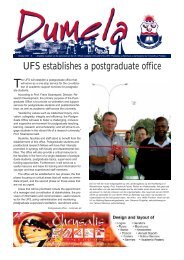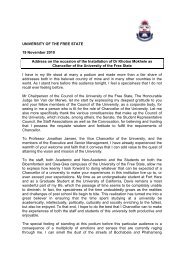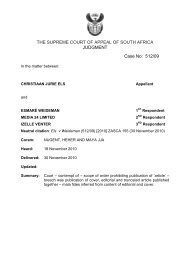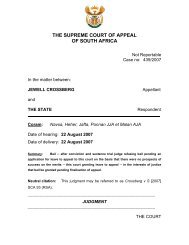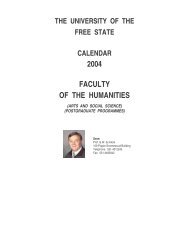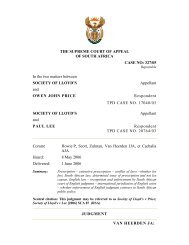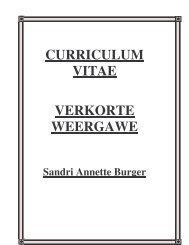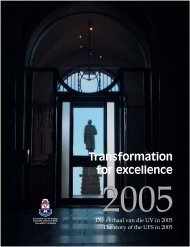THE SUPREME COURT OF APPEAL OF SOUTH AFRICA JUDGMENT
THE SUPREME COURT OF APPEAL OF SOUTH AFRICA JUDGMENT
THE SUPREME COURT OF APPEAL OF SOUTH AFRICA JUDGMENT
You also want an ePaper? Increase the reach of your titles
YUMPU automatically turns print PDFs into web optimized ePapers that Google loves.
18indicator on the latter’s video machine. His explanation that he had no properrecall of what had occurred until his detention and that during the time ofdetention his memory cleared and improved is unadulterated nonsense. A furthernegative feature of the appellant’s evidence flows from his responses undercross-examination when he was questioned about time frames on the Sunday inquestion. A reading of the questions and answers will reveal that he attempted totailor his answers to evidence adduced by the State and that he was not relyingon his memory but was resorting to reconstruction. The appellant’s case mutatedduring the trial, from the suggestion that drug dealers might have beenresponsible for Sasha Leigh’s disappearance to the suggestion of a policeconspiracy. The court below pointed out that the disclosure that Sasha Leigh hadfollowed him into the yard came very late during the trial. The disclosure itselfevolved from being speculative to being positive.[61] Courts should always consider the cumulative effect of items ofcircumstantial evidence. In Schwikkard and Van der Merwe Principles ofEvidence 3 ed (2002) p 537-538 the learned authors point out that this approachcan also be put as follows: The state must satisfy the court, not that eachseparate item of evidence is inconsistent with the innocence of the accused, butonly that the evidence taken as a whole is beyond a reasonable doubtinconsistent with such innocence.[62] See also in this regard S v Ntsele 1998 (2) SACR 178 (SCA) at 182D-Fwhere the following appears:‘Ons reg vereis insgelyks nie dat ‘n hof slegs op absolute sekerheid sal handel nie, maar wel opgeregverdigde en redelike oortuigings ─ niks meer en niks minder nie (S v Reddy and Others1996 (2) SASV 1 (A) op 9d-e). Voorts, wanneer ‘n hof met omstandigheidsgetuienis werk, soos indie onderhawige geval, moet die hof nie elke brokkie getuienis afsonderlik betrag om te besluithoeveel gewig daaraan geheg moet word nie. Dit is die kumulatiewe indruk wat al die brokkiestesame het wat oorweeg moet word om te besluit of die aangeklaagde se skuld bo redelike twyfelbewys is (R v De Villiers 1944 AD 493 op 508-9). Dit is inderdaad wat die Verhoorhof in hierdiegeval gedoen het.’


